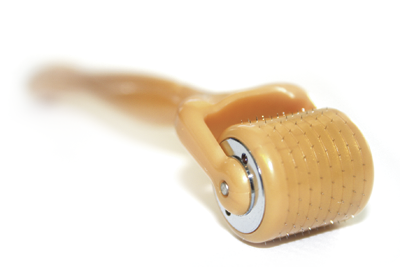Microneedling may not be as familiar as laser resurfacing, chemical peels or dermabrasion therapy. However, since its introduction a few years ago, microneedling, or skin needling, is slowly gaining traction, especially for those who are intrepid enough to try the newest trend.
Microneedling is a minimally invasive treatment that involves pricking the skin with thin needles in order to deliver skin benefits. The procedure is carried out using a small, hand-held roller that is covered with thin needles ranging in length from 0.2mm for home use to 3.0mm for professional use in clinics, spas and salons. More recently, an automated, vibrating pen device has been developed that allows a more vertical insertion of the needles, thus minimizing the chance of skin tearing as the needles exit the surface of the skin.
The theory behind microneedling is that the creation of tiny holes in the skin stimulates the body’s natural wound healing process. This increases the production of collagen and elastin, two components necessary for healthy skin, which decrease as we age. As the natural rebuilding and regeneration processes take place over the following weeks, the following benefits have been reported:
- Skin is more plump
- Fine lines are less visible and
- Acne scarring is reduced
While microneedling is most commonly performed on the face, it has also been used on other areas of the body, such as the legs, to improve skin texture and reduce the appearance of cellulite. In addition to stimulating collagen production, the micro-channels in the skin that are created during a microneedling session may allow topical serums or treatments to be absorbed deeper into the epidermis.
As with all invasive skin procedures, there are risks to consider. Infection, pain, tightness and minor bleeding may be experienced. Swelling may occur as the skin recovers. Risks may be reduced by having a trained professional perform the microneedling. The tool should be sterilized and the procedure done on skin that has been scrupulously cleansed. A numbing agent like Emla Cream may be used to minimize discomfort. After the procedure, skin may remain pink or red for up to 24-36 hours (much like a sunburn). Although regulations vary from state to state, most microneedling sessions should be scheduled 4-6 weeks apart. Results reportedly take 6-8 weeks to appear.
Microneedling is not recommended for everyone. If you have a pre-existing medical condition, are taking medications including anticoagulants or steroids or have inflammation or open wounds on the skin, you should discuss the procedure with your physician first. It is also not advised if you are prone to developing keloids or have experienced poor wound healing.




